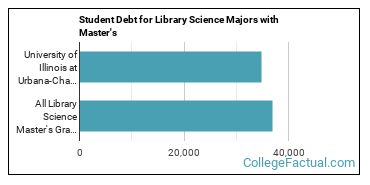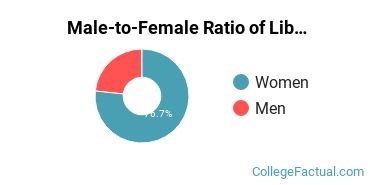University of Illinois at Urbana-Champaign Master’s in Library & Information Science
The main focus area for this major is Library & Information Science. For more details on this concentration, visit its profile page.
Library & Information Science is a major offered under the library science program of study at University of Illinois at Urbana-Champaign. Here, you’ll find out more about the major master’s degree program in library science, including such details as the number of graduates, diversity of students, and more.
If there’s something special you’re looking for, you can use one of the links below to find it:
- Master’s Degree Rankings
- Graduate Cost
- Student Debt
- Average Salary
- Online Learning
- Student Diversity
- Focus Areas
- References
Featured schools near , edit
Rankings for the UIUC Master’s in Library Science
Each year, College Factual produces its Best Library & Information Science Master's Degree Schools ranking to help students decide which school is the best fit for them. To determine the school's rank, we look at objective measures, such as post-graduation earnings, student and faculty diversity, and accumulated student debt.
UIUC was in the top 10% of the country in this year's ranking of library science master's programs, ranking 40 out of 782 colleges and universities in the nation. It is also ranked #3 in Illinois.
How Much Does a Master’s in Library Science from UIUC Cost?
UIUC Graduate Tuition and Fees
In 2018-2019, the average part-time graduate tuition at UIUC was $726 per credit hour for out-of-state students. The average for in-state students was $543 per credit hour. Information about average full-time graduate student tuition and fees is shown in the table below.
| In State | Out of State | |
|---|---|---|
| Tuition | $14,997 | $28,404 |
| Fees | $3,086 | $3,086 |
UIUC Library Science Master’s Student Debt
One way to think about how much a school will cost is to look at how much in student loans that you have to take out to get your degree. Students who received their master’s degree at UIUC in Library Science walked away with an average of $34,737 in student debt. That is 6% lower than the national average of $36,933.

How Much Can You Make With a Master’s in Library Science From UIUC?
The median early career salary of library science students who receive their master’s degree from UIUC is $41,200 per year. That is about the same as the national average of $41,814.

Does UIUC Offer an Online Master’s in Library Science?
If you’re interested in online learning, you’re in luck. UIUC does offer online classes in its library science master’s degree program. To see if the school offers distance learning options in other areas, visit the UIUC Online Learning page.
UIUC Master’s Student Diversity for Library Science
Male-to-Female Ratio
Women made up around 76.7% of the library science students who took home a master’s degree in 2018-2019. This is less than the nationwide number of 82.0%.

Racial-Ethnic Diversity
Of those graduates who received a master’s degree in library science at UIUC in 2018-2019, 12.7% were racial-ethnic minorities*. This is lower than the nationwide number of 21%.

| Race/Ethnicity | Number of Students |
|---|---|
| Asian | 4 |
| Black or African American | 10 |
| Hispanic or Latino | 6 |
| Native American or Alaska Native | 0 |
| Native Hawaiian or Pacific Islander | 0 |
| White | 197 |
| International Students | 6 |
| Other Races/Ethnicities | 13 |
Master’s in Library Science Focus Areas at UIUC
Library & Information Science students may decide to major in one of the following focus areas.
| Focus Area | Annual Graduates |
|---|---|
| Library & Information Science | 236 |
References
*The racial-ethnic minorities count is calculated by taking the total number of students and subtracting white students, international students, and students whose race/ethnicity was unknown. This number is then divided by the total number of students at the school to obtain the racial-ethnic minorities percentage.
More about our data sources and methodologies.


